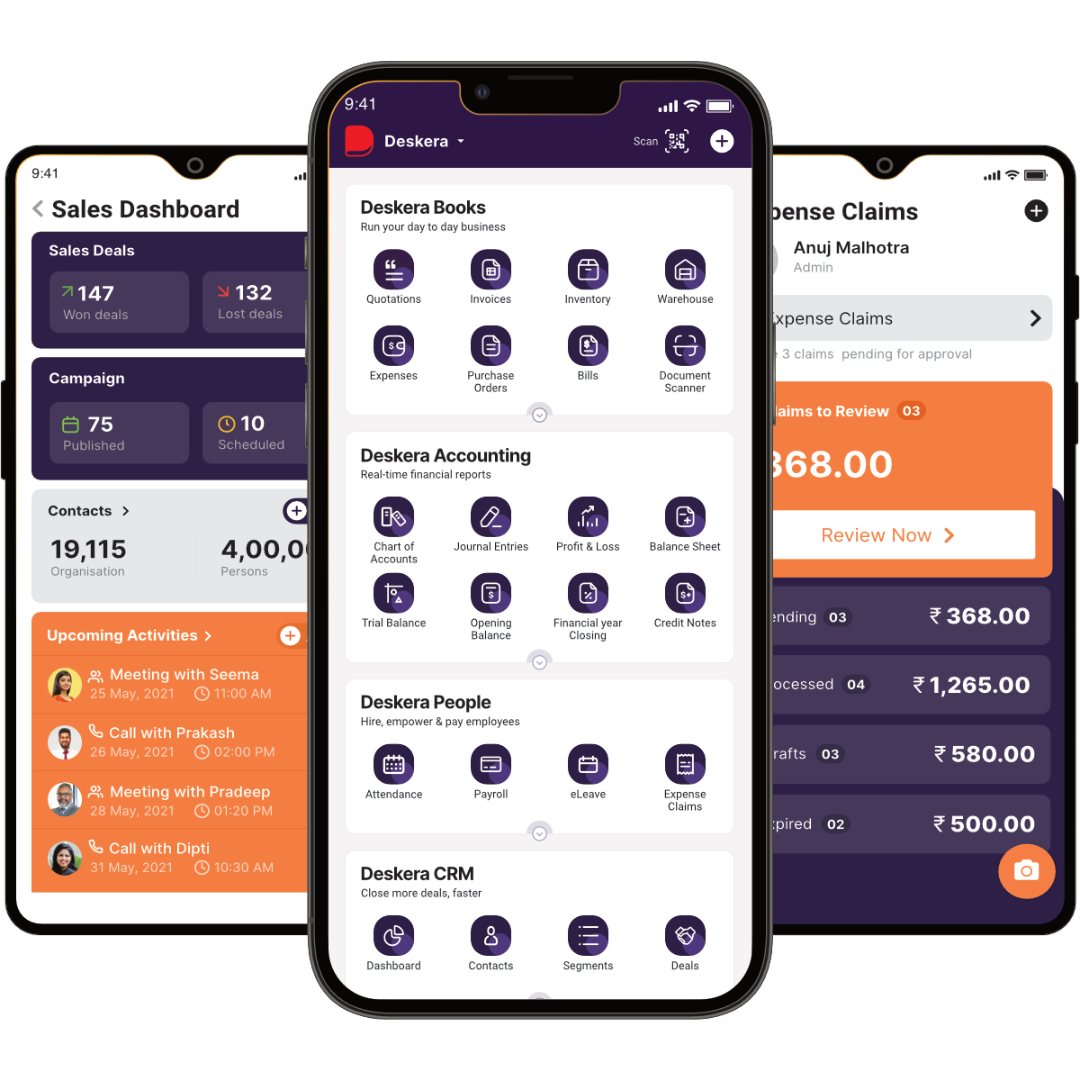A study by the National Bureau of Economic Research found that product bundling can increase profits by up to 30%.
Product bundling is a marketing strategy companies can use to increase sales and maximize profits. It involves offering multiple products or services as a "bundle" of items. This strategy can attract new customers, increase customer loyalty, and drive sales.
By bundling products together, companies are able to offer customers greater value. This translates into higher profits for them.
This article will discuss the benefits of product bundling and how to implement it in your business.
Here is the list of points we shall cover in this post:
- What is meant by Product Bundling?
- Types of Product Bundling
- 5 Tips for Product Bundling
- Advantages of Product Bundling
- Disadvantages of Product Bundling
- 5 Metrics to Determine which Products You should Bundle
- Examples of Product Bundling
- Bundling for Resellers
- Can ERP and MRP help in Product Bundling?
- Conclusion
- How can Deskera Help You?
- Key Takeaways
- Related Articles
What is meant by Product Bundling?
Product bundling is the practice of combining multiple products or services together into a single package. Typically the products are offered at a discounted price.

This allows customers to purchase multiple products or services at a lower price. It would be more expensive if they purchased the same products separately. It is used by businesses to increase sales and customer loyalty.
Product bundling can be used to increase customer loyalty. This happens because customers are likelier to choose a bundled package over individual products.
This strategy can also be used to encourage customers to make larger purchases. For example, a business may offer a bundle of products. This bundle may include a laptop, printer, and a carrying case at a discounted price. These bundles can also help businesses increase their profits. This is because they are able to sell multiple products at once.
Types of Product Bundling
We have learned about the concept of product bundling. Let’s take a look at the different types of bundling.
Pure Bundling
It denotes a collection of products that may only be purchased as part of a package. Here, no item is offered separately.
Monopolies frequently employ this type of packaging to limit their clients' options. Cable TV companies provide packages that include channels that cannot be purchased separately. Also, tour providers offer trips that include a transfer and hotel accommodations. They may also add a guided walking tour or headphones.
Mix Matching Bundling
Here, the marketers can select several products for packaging. Thus, the customers can select the necessary pieces and make a unique package. This gives them the impression that they have complete control over the transaction. Companies frequently employ perishables for these deliveries, such as shampoos or beer.
New Product Bundling
This category means combining a recently debuted item with a high-selling thing. Marketers can boost their new products and promote them for free in this manner. The better the product you chose as the main one, the more likely your clients will purchase this bundle.
Gift set Bundling
As the name implies, this sort of bundling assists shoppers in selecting gifts for their friends. The rationale is that the more items in a set, the greater the present. This form of bundling is especially popular around the holidays. This is when consumers are looking for high-quality, utilitarian things.
BOGO Bundling (Buy X Get Y)
"Buy one, get one free" is a popular bundling employed by e-Commerce retailers. Companies use it to entice customers to buy a full-priced product to receive another as a gift. Or they may have to buy a product for a significant discount.
Old Inventory Bundling
Deadstock deters companies from investing in new product development.
As a result, the company becomes stagnant.
You can free up inventory space by selling superfluous and obsolete things. This helps enhance income by using an old inventory bundling method. Consider combining a slow-moving product with one of your best-sellers at a discount. This will make your offer more appealing to customers.
Occasional Bundling
This form of product bundling is ideal for holidays and special occasions. You may also introduce them for seasonal necessities. During peak season, beauty establishments can design customized travel kits.
This type of bundling allows businesses to increase their earnings around holidays and special occasions.
5 Tips for Product Bundling
Here are the top 5 tips that shall assist you in product bundling:
- Consider the Needs of Your Target Market
When creating product bundles, it is crucial to consider the needs of your target market. Know what types of products they would be interested in. Also, understand how you can create a bundle that suits their needs.
2. Choose Products That Complement Each Other
When creating product bundles, choosing products that complement each other is important. For example, if you sell a laptop, you should bundle it with a laptop case. A mouse and a laptop stand are good options, too.
3. Price the Bundle Competitively
Price your bundle competitively to ensure that your customers are getting the best value for their money.
4. Promote Your Bundle
Once you have created your bundle, promote it to your customers. Use social media, email campaigns, and other marketing strategies. These will help to get the word out about your bundle.
5. Offer Limited-Time Deals
Offering limited-time deals can be a great way to boost sales. For example, you might offer a 10% discount for customers who buy your bundle within the next 24 hours.
Advantages of Product Bundling
There are several advantages of product bundling. These include the following:
- Increased sales: Bundling products together can increase sales. This happens because customers find buying a bundle more convenient than individual products.
- Increased customer loyalty: By bundling products, customers may be more inclined to stay with the company. This is due to the increased value they are getting.
- Cost savings: Companies can save money by bundling products together. This is because they can reduce costs by purchasing in bulk. They may then pass the savings on to the customers.
- Increased brand visibility: Companies can increase brand visibility by offering bundled products. It will increase overall customer awareness of the brand.
- Increased customer satisfaction: Customers are more likely to be satisfied. Buying bundled products let them receive more value for their money.
Disadvantages of Product Bundling
It is essential to learn about the disadvantages of product bundling. Let’s run through them in this section:
- Unattractive to some Consumers: Product bundling may not be attractive to some consumers who do not need all the products in the bundle and would rather purchase the specific products they need separately.
- Increased Competition: Bundling can increase competition, as rival companies may introduce similar bundles in order to compete.
- Difficult to Price: It can be difficult to price bundled products. This happens because the value of each individual product in the bundle may vary.
- Loss of Product Identity: Bundling can make it difficult for individual products to stand out. This is due to the fact that they are grouped with similar products.
- Lower Profit Margins: Bundling can lead to lower profit margins. The cost of the bundle may be lower than the cost of the individual products.
- Limited Choice: Bundling limits the customers’ choice of products. This is because they are only able to purchase the entire bundle.
- Confusion: Packaging multiple products into a bundle can confuse customers. They may need help understanding the value of each product in the bundle.
- Price Points: If the bundle is priced too high, customers may be less willing to purchase it. Likewise, if the bundle is priced higher, it may not be profitable for the company.
5 Metrics to Determine Which Products You Should Bundle
When considering product bundling as a strategy, ensure that you have all the metrics covered. This will help you come up with the best outcomes. Let’s run through some significant metrics for product bundling:
Conversion Rate
The conversion rate measures the percentage of customers who purchase a bundle out of the total number of customers who view the bundle. This metric indicates how effective the bundle is in convincing customers to buy.
Average Order Value
This metric measures the average amount spent by customers when buying a bundle. A higher average order value indicates that customers are willing to pay more for a bundle.
Revenue per Visitor
This metric measures the average revenue generated per customer who views the bundle. A higher revenue per visitor indicates that customers are more likely to purchase the bundle.
Customer Satisfaction
Customer satisfaction is a key indicator of success for bundles. A higher customer satisfaction score indicates that customers are more likely to recommend the bundle to their friends and family.
Retention Rate
The retention rate measures the percentage of customers who continue to make purchases from the bundle after their initial purchase. A higher retention rate indicates that customers are buying the bundle more than once. This is a sign of customer loyalty and satisfaction.
Examples of Product Bundling
Some of the common examples of product bundling are as follows:
- Cable TV and Internet Bundles: Cable TV and Internet bundles are a common type of product bundling. These packages often offer a discounted rate on both services. It is better compared to the cost of purchasing them separately.
- Cell Phone and Data Plans: Many cell phone providers offer bundled plans. Such plans include a certain amount of data, minutes, and texting for a discounted price.
- Grocery Store Meal Deals: Grocery stores often bundle together ingredients for a specific meal at a discounted rate.
- Clothing Packages: Clothing retailers may bundle together multiple items. These include goods such as a shirt, pants, and shoes, at a discounted price.
- Furniture Sets: Furniture stores may offer discounted prices on furniture sets, such as a couch and chairs.

Bundling for Resellers
Bundling is a great way for resellers to increase sales and profits. Bundling allows resellers to combine multiple items into one package. This gives customers more value for their money.
By bundling products, resellers can create customized packages that meet specific customer needs. It also helps them increase customer loyalty and create more brand recognition. Bundling also enables resellers to reduce costs as well as provide customers with a more convenient shopping experience.
Can ERP and MRP help in Product Bundling?
As a business owner, you must evaluate the ways in which your business advances. Enterprise Resource Planning (ERP) can be an efficient tool here.
It is a software system that allows businesses to manage and integrate their core business processes. These include the following:
- Inventory management
- Financials
- Supply chain
- Human resources
- Customer relationship management.
ERP systems provide a centralized platform for data. This enables businesses to gain real-time visibility into their operations and make better decisions.
MRP stands for Material Requirements Planning. It is a system used to manage the procurement of materials and the scheduling of production. It is used to minimize inventory and ensure that production is completed on time. MRP systems are used to forecast demand and plan purchasing. They also manage production schedules and generate reports to manage inventory levels.
ERP can help in product bundling by tracking inventory levels. Thus, making it easier to properly bundle products. It can also help in identifying the right products to bundle together. Also, it can help to automate the process of creating product bundles.
Additionally, ERP can help with the pricing of product bundles. Thereby, allowing companies to create bundles that are more cost-effective. Finally, ERP can also help with sales, promotion, and distribution of product bundles.
Conclusion
In conclusion, product bundling is a great way for businesses to increase sales. They can improve customer satisfaction and create more value for their customers. Businesses need to consider the factors listed above when considering a product bundling strategy.
Businesses of all sizes use Product Bundling. From small businesses to large corporations, all utilize this strategy. It is also used by retailers, manufacturers, and service providers. Companies can enhance revenue by combining multiple products or services into one package.
Product bundling can be effective, but it must be done correctly to be successful. Businesses must understand the factors involved and consider the customer’s needs. This will enable them to create successful product bundles. Thus, creating value for their customers and increasing sales.
How can Deskera Help You?
Here are some examples of how Deskera ERP and MRP systems might help you:
- Plan production schedules
- Maintain a Bill of Materials.
- Create detailed reports
- Create your dashboard, among other things!

Deskera Books is an online accounting software that makes it easy to manage your finances. It lets you stay on top of business operations. With Deskera Books, you can easily track your income and expenses, generate invoices, and manage inventory. Creating financial statements is a breeze. It also offers a range of features that make it easy to comply with tax regulations.
Deskera Books provides powerful tools to help you streamline your accounting process and make better business decisions.
Deskera CRM can help businesses streamline their daily operations and gain insights into customer behavior. It facilitates the automation processes to increase efficiency. It provides features such as customer relationship management (CRM), customer support, and analytics. Deskera CRM also provides data-driven insights to help businesses better understand their customers. This way, they can track customer engagement and optimize customer service.
It also enables businesses to manage their sales pipeline and track sales performance. Businesses can also access customer feedback. Finally, Deskera CRM can help businesses automate data entry and lead generation tasks.
Deskera People can help businesses streamline their HR processes and automate many HR tasks. It can help them manage their employee data and track employee attendance and leave. Thus, it facilitates processing payroll efficiently. It also helps streamline the recruitment and onboarding process. It also offers to manage employee performance and development.
Key Takeaways
- Product bundling is a marketing strategy companies can use to increase sales and maximize profits. It involves offering multiple products or services as a "bundle" of items.
- This strategy can attract new customers, increase customer loyalty, and drive sales.
- By bundling products together, companies are able to offer customers greater value. This translates into higher profits for them.
- Pure, mix matching, and gift set bundling are some of the types of product bundling.
- Some others include old inventory bundling and occasional bundling.
- Pricing the bundle competitively and considering the target market is crucial before bundling products.
- Ensure your products complement each other. You may also offer limited-time deals for better outcomes.
- Increased sales and customer loyalty are the benefits of bundling. You may also see increased cost savings and better brand visibility.
- Product bundling may be attractive to some of your customers. This could be a potential disadvantage.
- Other downsides are limited choice, lower profit margins, and increased competition.
- Some metrics to consider before bundling are conversion rate and average order value. Also, evaluate revenue per visitor and retention rate.
- Furniture sets and clothing packages are commonly observed examples of product bundling.
Related Articles












